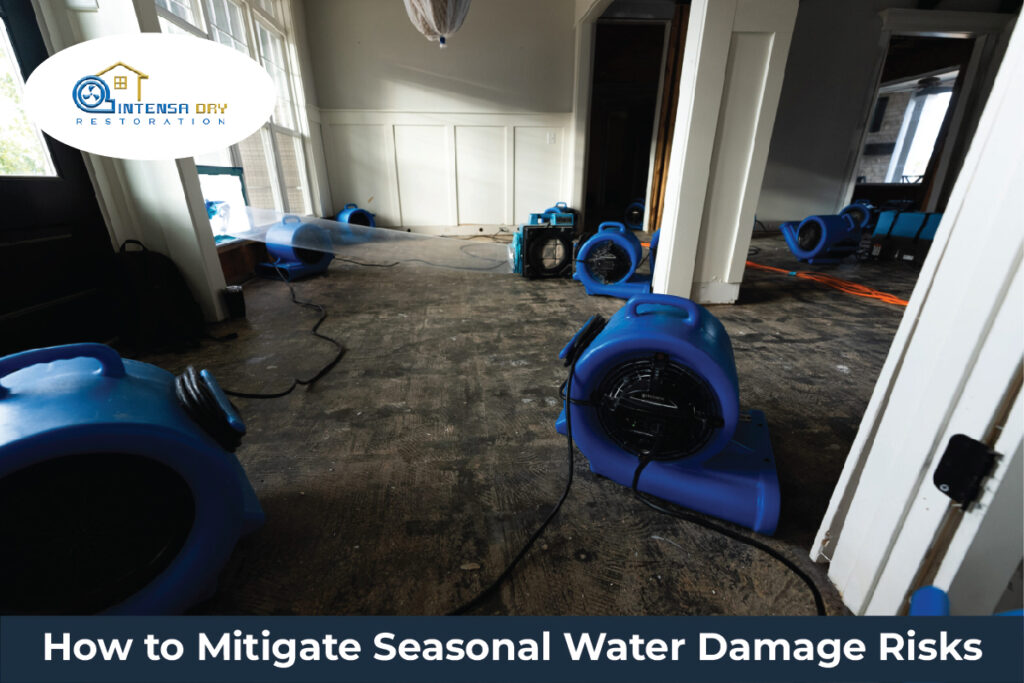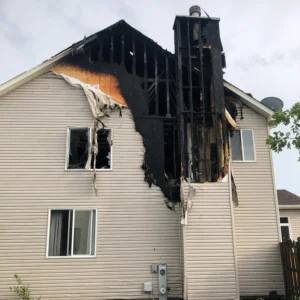Blogs
How to Mitigate Seasonal Water Damage Risks?

Every season brings its own set of challenges for homeowners, and water damage is one of the most common. From heavy spring rains to frozen winter pipes, water can sneak into your home in surprising ways. The truth is, seasonal water damage isn’t just about costly repairs—it can also lead to mold growth, structural issues, and long-term health concerns. Fortunately, with the right precautions and maintenance, you can safeguard your home year-round. This guide covers everything from basement waterproofing solutions and roof care to gutter cleaning and plumbing maintenance, so you can stop seasonal water threats before they become disasters.
Understanding Seasonal Water Damage Patterns
Seasonal water damage risks vary depending on where you live, but the patterns remain similar. Spring often brings melting snow and heavy rains, which increase the risk of basement flooding. Summer storms can overwhelm gutters and downspouts, sending water toward your foundation. In fall, leaves clog drainage systems, leading to pooling water around your home. Winter, of course, brings frozen pipes and ice dams on roofs.
Recognizing these seasonal patterns is your first step toward prevention. Each change in weather puts different stress on your home. By anticipating these risks, you’ll be better prepared to implement basement water intrusion repair, downspout and gutter maintenance, or even simple sump pump testing before trouble hits.
Spring: Stop Flooding Before It Starts
Spring is notorious for flooding thanks to snowmelt and heavy rainstorms. Preventing basement flooding during this season requires a proactive approach. Begin with a thorough inspection of your basement and foundation for cracks that may allow seepage. Basement waterproofing solutions like applying waterproof sealants for concrete walls and repairing small cracks with epoxy can make a big difference.
Another springtime must-do is checking your drainage system. French drain installation for basements and maintaining a drain tile system are effective long-term fixes. If you notice standing water around your foundation, regrading your yard so water flows away from the home can also reduce the risk of water intrusion.
Summer: Managing Heavy Storms and Humidity
While summer might feel carefree, heavy thunderstorms can overwhelm unprepared homes. One of the biggest culprits during summer is clogged gutters. Downspout and gutter maintenance should be a seasonal ritual. Ensure they’re clear of debris and extend at least six feet from your home’s foundation to protect basement walls from seepage.
Humidity control is another summer concern. Moisture control in basements is essential during hot months. Using dehumidifiers, improving ventilation, and sealing basement seams help keep moisture at bay. This not only protects against structural issues but also supports mold prevention in basements—critical for maintaining healthy indoor air quality during damp months.
Fall: Preparing for Heavy Rains and Leaves
Fall is a beautiful season, but falling leaves can wreak havoc on drainage systems. If your gutters are clogged, water may spill over and soak the soil near your foundation. This increases hydrostatic pressure against basement walls, leading to cracks and leaks. Regular leaf removal and installing gutter guards are simple but effective basement leak prevention strategies.
Fall is also an excellent time to inspect crawl space and basement drainage. Adding extensions to downspouts or cleaning your sump pump ensures your system is ready for winter. Think of this season as your last chance to prepare your home for the harsher months ahead.
Winter: Avoiding Frozen Pipes and Ice Dams
Winter poses unique water damage risks, from frozen plumbing to roof ice dams. Basement crack repair solutions won’t help much if pipes burst upstairs. Insulating pipes in unheated areas, keeping your thermostat consistent, and allowing faucets to drip slightly during freezing nights are all effective ways to prevent pipe bursts.
Ice dams on roofs are another hazard. When warm air inside your home melts snow, it refreezes at the edges, trapping water that seeps under shingles. Proper attic insulation and ventilation help reduce this risk. Addressing winter risks is about balancing both plumbing care and roof maintenance to prevent expensive water damage restoration later.
Year-Round Sump Pump and Drainage Care
A sump pump is one of your strongest defenses against flooding, but only if it works properly. Seasonal testing should be part of your routine. Pour a bucket of water into the pit to ensure the pump activates. Sump pump maintenance tips also include cleaning the pit, checking the power supply, and considering a backup system for power outages.
Drainage systems like French drains or drain tile systems need yearly inspection too. Keeping them free of blockages ensures they function during sudden downpours. Long-term basement water protection depends on consistent upkeep rather than last-minute fixes when storms arrive.
Professional vs. DIY Prevention: When to Call for Help
Many seasonal water protection steps are DIY-friendly, like gutter cleaning or sealing small cracks. However, major basement water intrusion repair or full foundation waterproofing methods often require professional help. Exterior basement waterproofing, for example, involves excavation and specialized coatings that most homeowners can’t do alone.
Hiring professionals may cost more upfront, but it ensures long-term basement water protection. A pro can also identify hidden issues like hydrostatic pressure, basement problems, or mold growth you may overlook. Knowing when to call in experts saves time, money, and stress in the long run.
Wrap-Up
Seasonal water damage is an ongoing threat, but with careful planning, you can protect your home year-round. From spring flooding prevention and summer humidity control to fall gutter cleaning and winter pipe insulation, each season requires a tailored approach. The key lies in combining proactive maintenance with smart upgrades like sump pump care, drainage improvements, and foundation waterproofing methods. Think of it as building a year-round shield around your home. By preparing for seasonal water risks in advance, you not only avoid costly water damage restoration but also ensure your home remains safe, dry, and comfortable no matter the season.
FAQs
1. What’s the most common cause of seasonal water damage?
It varies, but basement flooding from poor drainage and frozen pipes in winter are the top culprits.
2. Do dehumidifiers help prevent seasonal water damage?
Yes, especially in summer. They reduce moisture control issues in basements and help prevent mold.
3. Can gutter guards really reduce water damage risk?
Absolutely. They keep gutters clear of leaves and debris, preventing overflow that can damage foundations.
4. Should I invest in professional waterproofing?
If you have recurring leaks, widespread seepage, or hydrostatic pressure problems, professional foundation waterproofing is highly recommended.

